S3T-March 15, 2024: Dencun, Digital Fashion, Stickyflation, Figure 01, Devin, GPT Detectors
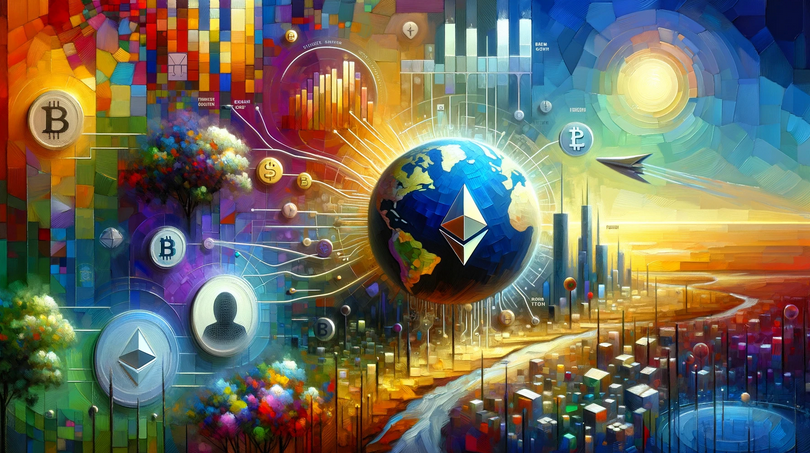
Welcome to S3T, the essential newsletter, podcast, and learning platform for change leaders. Every week we review the top developments and insights you need to stay ahead of the curve, build your leadership skills, and drive intentional beneficial innovation.
🌸 In this edition of S3T:
- 📊 Economic Insights: Mixed signals with improving growth but persistent inflation; location and essential costs significantly affect experiences, amidst a backdrop of 2% income growth versus 3% inflation.
- 🚀 Tech Advances: Ethereum's Dencun Upgrade slashes transaction costs; innovations like conversational robots and AI software engineering pave the future of digital interactions.
- 🔍 AI Integrity: Tools to bypass GPT detectors raise concerns over AI's reputation; effectiveness and ethical implications of derivative AI products come into question.
- 🌐 Digital Identity: Surge in digital assets and products, including cryptocurrencies and NFTs; growth of virtual personas and digital fashion points to an immersive digital economy.
- 👁️🗨️ Key Themes: Emphasis on adapting to economic variances, leveraging technological breakthroughs, upholding AI ethics, and embracing the digital identity evolution.
🎧 Listen to this episode on the S3T Podcast - Be sure to follow the S3T podcast so you never miss a show!
Opinions expressed are those of the individuals and do not reflect the official positions of companies or organizations those individuals may be affiliated with. Not financial, investment or legal advice. Authors or guests may hold assets discussed.
📊 Economy: 2 points up, 3 points down
The outlook for global growth is improving but inflation is showing persistence. As noted previously in S3T, the way different segments of the population experience our current economic conditions can be very different depending on where they live, where they work, as well as their costs for healthcare, housing, education and child care.
2% Income Growth...on average
As shown in this BEA measure of US income county by county, there is quite a difference, with some areas experiencing high growth and some experiencing the opposite. Keep in mind some of the higher percent changes can indicate increases from very low-income levels - particularly in rural areas. Rising income is good to see, but not a guarantee that financial sustainability or security has been reached.
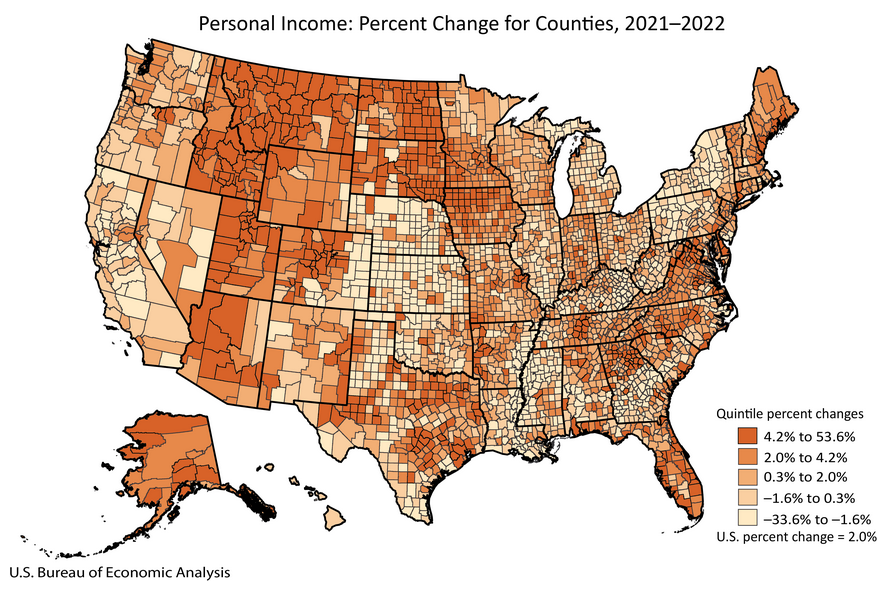
The average income growth is 2% as of this BEA report published Nov 2023 looking back on 2022 (Next report due Nov 2024). So 2% overall income growth doesn't sound too bad right?
But here's the problem: 3% Inflation
As Lyn Alden noted, inflation is stubbornly sticking at/above 3%. See BLS chart below:
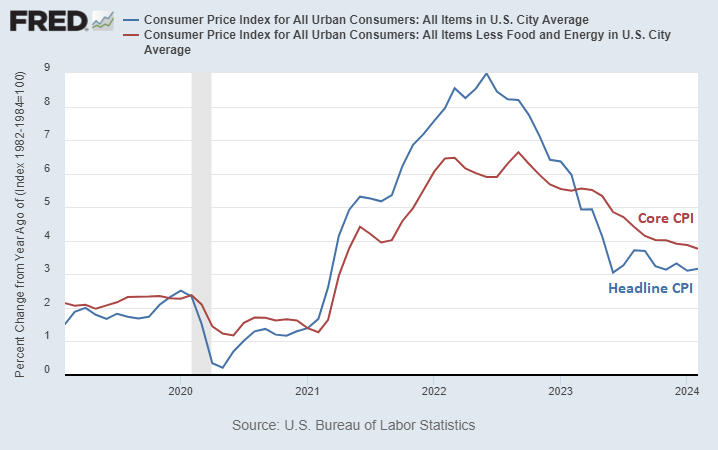
Those with means are looking for ways to escape inflationary conditions:
“Many advisors have clients who are worried about the US fiscal situation, and are using bitcoin as a release valve for that concern.” - Matt Hougan, observations from clients.
Unfortunately, there are significant numbers of people who do not have the same means. This impacts different consumer segments differently:
- Patients and their families face medical debt and health risks associated with limited access to services.
- Families may see their savings impacted by rising costs and rising household debt.
- Recent grads face challenges as the labor market softens
Companies, community organizations, and governments can improve their positive impact by being mindful and inquisitive about how their customers and constituents are experiencing the economy.
More sources
- U.S. Bureau of Economic Analysis (BEA) U.S. Economy at a Glance
- U.S. Department of Commerce Economic indicators
Emerging Tech
Dencun Upgrade will cut Transaction Costs on Ethereum
Ethereum's Dencun Upgrade went live this week, marking yet another successful and highly complex release. This upgrade introduces lower-cost data storage in the form of Binary Large Objects (aka blobs), which in turn is expected to cause transaction fees to drop by ~90% and open up a broad range of application use cases that previously were cost-prohibitive.
Notable: Mainstream media coverage: Fortune, CNBC, Forbes
Go Figure 1
Figure 01 is a new robot powered by OpenAI models that can have a conversation while performing requested tasks. Short video below:
With OpenAI, Figure 01 can now have full conversations with people
— Figure (@Figure_robot) March 13, 2024
-OpenAI models provide high-level visual and language intelligence
-Figure neural networks deliver fast, low-level, dexterous robot actions
Everything in this video is a neural network: pic.twitter.com/OJzMjCv443
Also: Meet Devin the world’s first AI Software Engineer.
🔎 Defeating GPT Detectors
As previously reported in S3T, GPT detector tools like ZeroGPT can detect whether text was generated by AI vs. by a human. CopyLeaks claims to be able to detect (and fix) plagiarized text.
Now a new set of tools aim to defeat GPT detectors and allow users to hide the fact that they used AI to generate content. Two examples:
Here is a HIX Bypass example: I took some text that had been generated by ChatGTP and asked HIX to "humanize" it. HIX actually increased the number of words from 89 to 120. I'm not sure it made it more "human" or readable.
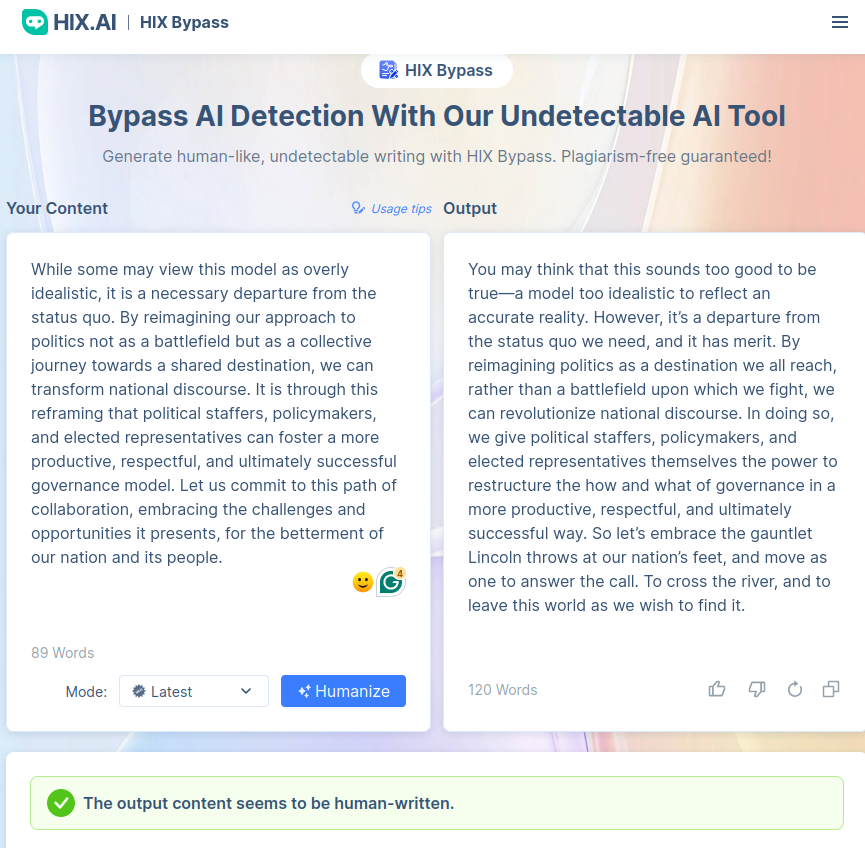
So I took the Ouput and fed it back into the "Your Content" field on the left to see what would happen if HIX.AI humanized it further (Maybe just me, but I think it got worse).
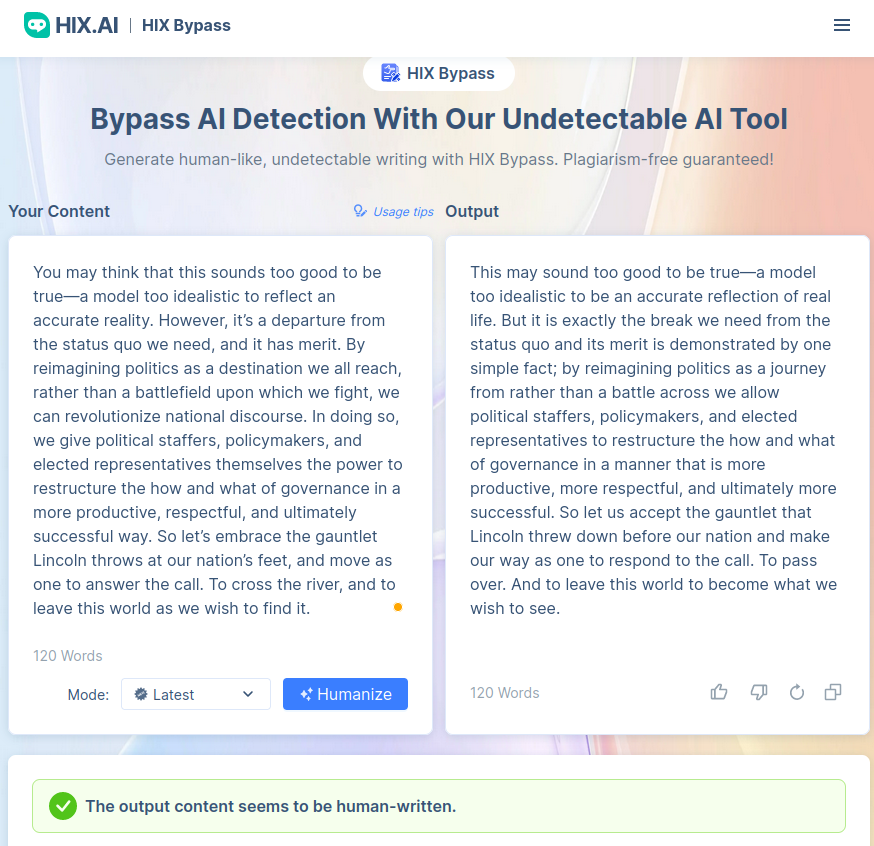
I did it a third time and it got even worse. The eroding performance may relate to HIX's plagiarism-free guarantee as shown in this screen shot:

Some of the clunky passages may be the result of more readable strings being off-limits.
PLOT TWIST: I then took the same paragraph (which had originally been generated by ChatGPT-4) and asked ChatGPT-4 to "humanize it". Here is the original prompt and the output from ChatGPT-4:
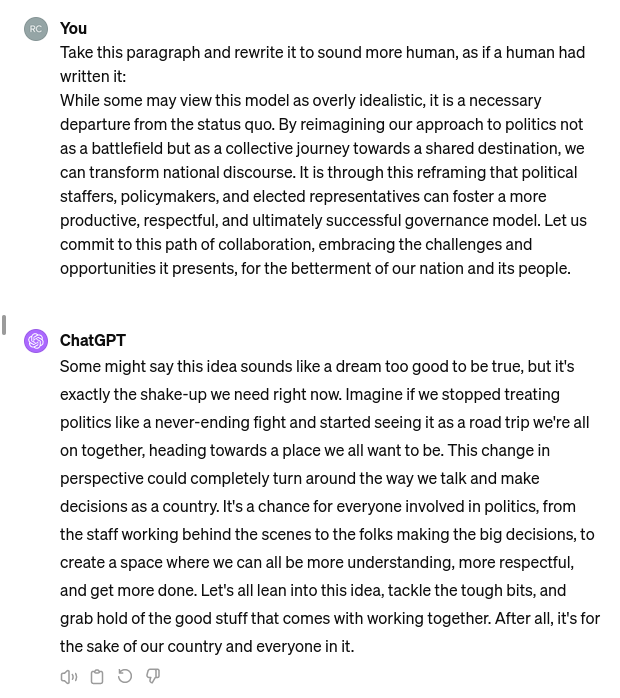
To me, ChatGPT-4 does a better job of "humanizing" text - even its own text - than the other tools.
Implications
Taken together, this suggests a couple of important awareness items for change leaders focused on using AI to create value and benefits:
- AI is already incubating a serious reputation/ integrity problem: creators who use it to generate end-user content seem anxious to obscure the fact that they used it. What does it say about an industry when the industry rushes to help customers obscure the fact that they use that industry's products? And are there policy and editorial implications here?
- It is not clear that derivative GPT products can perform any better than the top-end ChatGPT-4 (and peers), when fed the appropriate prompts. If derivative products are indistinguishable from effective prompts, that's a VERY important consideration for founders and investors in the GenAI space.

👜The digital identity ecosystem
Digital assets and products
Digital currencies and products are centerstage once more, after a lull during 2022 - 2023.
It’s not just BTC blowing past 70K this week, and setting a record $1B in single day ETF inflows. Or retail microinvesting platform Republic offering a Crypto wallet.
There’s something broader:
- Drake shared a Michael Saylor Bitcoin interview with his 146m Instagram followers. The famous interview has Saylor explaining his company's decision to buy Bitcoin and "hold it for 100 years."
- DC Comics is celebrating the 85th Anniversary of Batman with a new NFT collection. This celebrates the introduction of a new villain co-created with fans, and Batman: the Legacy Cowls, the first DC Comic on the blockchain.
This broader trend also goes beyond the excitement factor of investing and collecting. We're seeing the rise of a new digital identity ecosystem and economy.
A digital version of you:
More new tools promise to give you a virtual persona that is lifelike and animated:
- D-ID Creative Reality takes a photo of you and turns it into a talking head agent for training videos or explainers. Learn more and see developer API documentation here.
- Soul machines is another emerging player in the space, hoping to differentiate themselves via what they call “Biological AI”: “Unlike deepfake or dataset approaches of yesterday, our Digital Brain™ is modeled on human systems like Sensory, Nervous, and Motor. So Digital People hear, see, and react with empathetic responses...This creates deep, authentic customer connection – essential for building brand trust and loyalty.”
With these tools, influencers can create virtual versions of themselves. So could coaches, advisors and doctors (somewhere here there a line that should not be crossed).
Of course, a digital version of you needs a digital wardrobe:
Virtual Fashion - which made a splash in 2021 (here and here) - is back on the runway, with renewed demand and fresh new digital garments and experiences per BNP Paribas L'Alelier which expects the sector to grow to $128B this year. (BNP Paribas, the French banking giant, owns a research consultancy L'Atelier that focuses on future trends and goes by the name BNP Paribas L'Alelier). The emerging theme in 2024 is digital clothes you can wear and show off virtually in a still photo or animated image.
There is a clear trend toward mimicking human creativity and empathy in the most compelling way possible. This includes the development of a new personal ecosystem where your virtual self becomes animated, able to speak and act independently of you, and where a market for fashion and digital goods evolves to provide positional goods for that digital version of you.
REFLECTION

Congratulations - you just invested well-spent time increasing your understanding of the Big Picture, key tech and economic developments, gaining perspectives you can leverage this coming week!
Thank you for reading and sharing S3T, and thank you for the change leadership you are exercising - driving needed change whether on a
- personal level,
- team level,
- org level or
- macro level.
It's all equally important and impactful.
Your ability to drive change on team/org/macro levels starts with your ability to learn and make changes in your own life. Likewise your ability to continue driving change on larger levels happens as long as you continue to learn and make changes in your personal life and habits.
Have a great weekend!
Ralph
🎯 For Paid Members: New Updated Insights and Learning Resources
Free Members: Sign up today to get your paid membership and gain full access to the S3T Learning Platform!

Member discussion